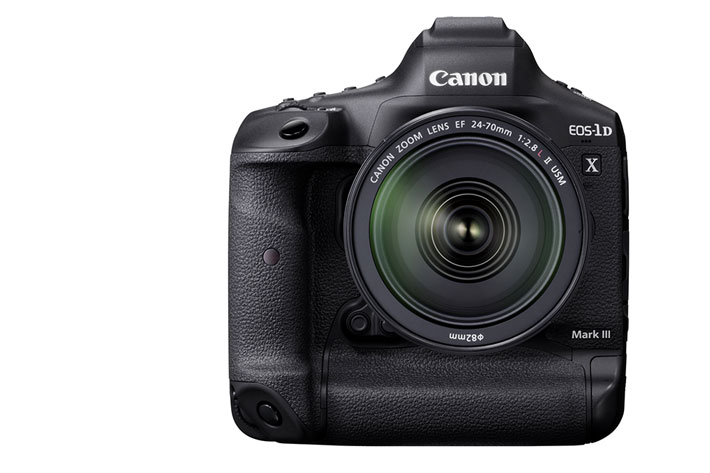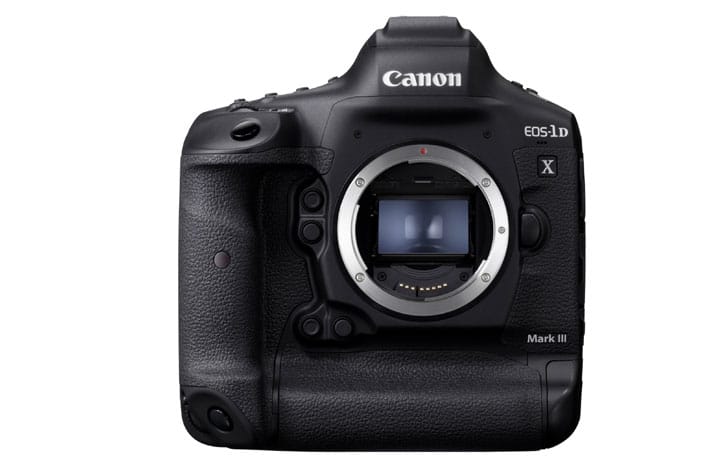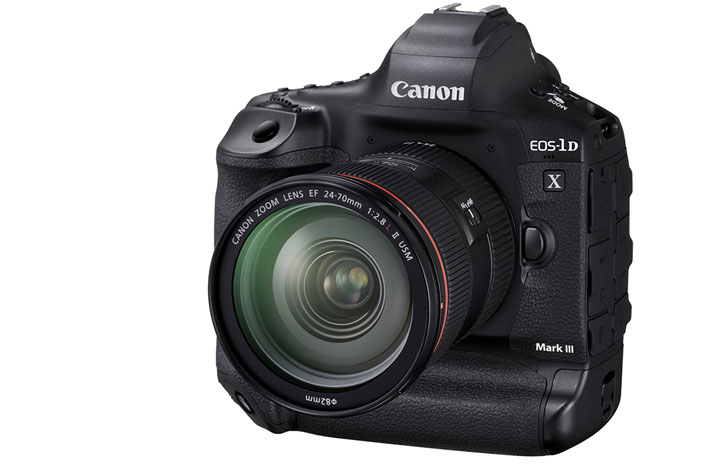
A step change in autofocus, that’s how Canon describes the new EOS-1D X Mark III DSLR camera, which introduces dramatically improved image quality, video and communications.
Now that Canon’s marketing has said everything there was to say about the new EOS R mirrorless family of cameras, it is time to tell all the good things about the newest DSLR from the company. There are some news, some of them suggesting that DSLRs are not dead or even forgotten, as some may have thought. Canon says that the DSLRs from the company continue to dominate professional photography, so a new tool for professionals is needed. The anticipated EOS-1D X Mark III is that camera.
While rumors, in current months, suggested a camera different from what Canon introduces now, there is, I believe, reason for professionals to be happy: the successor to the world-renowned EOS-1D X Mark II is presented as the camera that professionals can trust, the model that will allow them to get “the shot”, a DSLR that can deliver it at a competitive speed – faster than ever before – ideal for the increasingly fast-paced industry.

Autofocus gets faster with deep learning
Autofocus is, says Canon, “blisteringly fast”, In fact, the whole camera is “blisteringly fast”, one can say. The camera has been in the hands of professional photographers globally, for some extensive real-world testing with professional photographers globally. Richard Heathcote, Senior Sports Photographer, Major Events, Getty Images said: “The new autofocus algorithm in the EOS-1D X Mark III takes subject tracking to a new level, with an intuitive controller and accurate results. It delivers as you would expect from the ultimate professional sports photography camera.”
The camera’s new autofocus algorithm improves stability and tracking – with both optical viewfinder and Live View shooting – using deep learning technology to ensure accurate focus tracking for every shot. When using the optical viewfinder the EOS-1D X Mark III makes use of a new autofocus sensor offering approximately 28x the resolution in the centre of the sensor than the one in the EOS-1D X Mark II – the current go to camera for professional photographers.

20fps mechanical or electronic shutter
It does not stop there, though, and what the EOS-1D X Mark III shows is that Canon has been working to make sure that whether you choose the optical viewfinder of Live View offers users the best of both worlds, and get it fast. In fact, the EOS-1D X Mark III supports significantly faster frame rates with full AF and AE, using either the optical viewfinder (up to approx. 16fps mechanical shutter) or Live View (up to approx. 20fps mechanical or electronic shutter). To keep up with the fast capture, the camera uses CFexpress card slots, which enable five times the RAW burst depth of its predecessor.
Offering expanded AF brightness range with greater precision, the EOS-1D X Mark III has a range of autofocus capabilities enabling photographers to get ‘the shot’. In Live View users can make use of 525 AF areas using the Dual Pixel CMOS AF system covering approximately 90×100 percent of the image sensor. Using the same AF algorithm as when shooting with the optical viewfinder, it ensures enhanced flexibility when framing subjects, whether it’s a race car on a track or a bird in flight.
Video: 4K60p with 10bit Canon Log
Video has not been forgotten, and the camera takes it to a whole new level, as it offers the power of 4K resolution to bring stories to life, with the capabilities to shoot cinematically with 4K movies including 4K60p with 10bit Canon Log internal recording. Reducing the amount of equipment needed for professionals on any given project, the EOS-1D X Mark III also shoots in RAW for both movie and stills.
The secret behind some of these new features are two: the all new, Canon-developed, CMOS sensor and DIGIC processor, delivering greater image quality, at even higher ISOs, with the ability to capture stills in 10bit using the HEIF file format. HEIF stands for High Efficiency Image Format, a format based on the High Efficiency Video Compression (HEVC), which is also known as H.265. Once you’ve captured the content you need, you want to be able to deliver it as quickly as possible, and the EOS-1D X Mark III is quicker than ever before.
Connect at twice the speed of the EOS-1D X Mark II
Featuring built-in Wi-Fi and low-energy Bluetooth in addition to GPS, the EOS-1D X Mark III is equipped to keep pace with ever-shortening deadlines, as the camera transfers data at twice the speed of the EOS-1D X Mark II when using the built in ethernet, or the new optional wireless file transmitter – the WFT-E9 – which is also compatible with the Canon’s recently launched Cinema EOS C500 Mark II camera. Coupled with simpler network set-up, the EOS-1D X Mark III greatly enhances the professional workflow.
The EOS-1D X Mark III will fit naturally into the kiy bag of any professional using the existing EOS-1D series, allowing seamless navigation with trusted ergonomics – whilst the magnesium alloy body offers the durability expected from Canon’s EOS-1 cameras. Professional photographers can expect, says Canon, “the same impressive build-quality as the EOS-1D X Mark II – phenomenal weather-sealing allows the camera to stand up to harsh conditions, including wind, rain and humidity.”
A new AF control, for faster operation
With, adds the company, “incredible low-light shooting capabilities, the EOS-1D X Mark III’s illuminated buttons allow for precision operation in challenging, dark and dimly-lit conditions. The camera also offers a new additional control for selecting AF points, built into the AF-ON button, allowing photographers to change AF points on-the-fly for the best composition – further simplifying their work. Dramatically improved battery life – with the same LP-E19 – also allows professionals to shoot for longer periods of time, without having to change batteries, reducing the chance of missing a shot.”
“The innovations put forth by the new EOS-1D X Mark III will set the new standard for professional DSLR cameras and further cement Canon’s commitment to its professional photographers,” said Kazuto Ogawa, president and chief operating officer, Canon U.S.A., Inc. “In developing the new camera, Canon listened to extensive user-feedback from professionals out in the field. The result is a camera that has evolved from its predecessor and maintained the overall quality that professional photographers have come to expect from the Canon EOS-1D series.”

